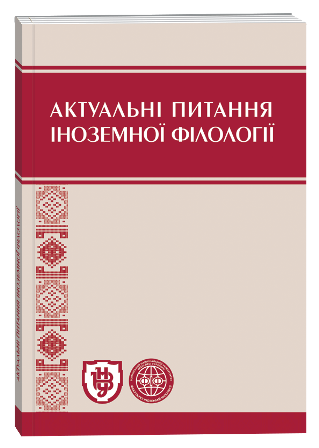BASIC PRINCIPLES AND LIMITATIONS OF NEURAL MACHINE TRANSLATION
DOI:
https://doi.org/10.32782/2410-0927-2022-16-31Keywords:
Neural machine translation (NMT), AI networks, source language, target language, parallel corpora, encoder, decoder, attention mechanism, adequacy errorAbstract
The article describes some problems of Neural Machine Translation (NMT) and the role of neural networks in the translation process. The mechanism of neural machine translation, its specific features, its differences from other machine translation systems and the system limitations are also analyzed. NMT systems use artificial neural networks that are trained on a large number of pairs of parallel sentences (‘parallel corpora’). These networks can read a word or a sentence in the source language and translate them into a target language. However, word matching and breakdown into phrases is no longer needed. This seems to be the main difference between the NMT system and other machine translation systems, such as Rule-based or Statistical MT. In order to create a NMT system one must provide the availability of several million pairs of sentences translated by human translators All modern NMTsystems are equipped with encoderdecoder and ‘attention’ mechanisms. The unique role of the ‘attention’ mechanism is to predict subsequent words during the translation process. While focusing on one or more words of the original sentence, it adds this information to the encoded full text. This process is similar to the behavior of a human translator who first reads the entire sentence and then looks at individual source words and phrases already translated or yet to be translated. In spite of its advantages, like fluency, NMT systems have a number of drawbacks. The most frequent are adequacy errors, as well as omissions and additions of content. Transfer of semantic content from the source to the target language often produces mistranslations. The source phrases need to be very clear, coherent and void of ambiguity to prevent low quality output.
References
Kalchbrenner, N., Blunsom, P. (2013). Recurrent Continuous Translation Models Proceedings of the 2013 Conference on Empirical Methods in Natural Language Processing, 1700–1709.
Sutskever, I., Vinyals, O., Le, Q. V. (2014). Sequence to Sequence Learning with Neural Networks, arxiv.org/pdf/1409.3215.pdf, 1–9.
Bahdanau, D., Cho, K., Bengio, Y. (2015). Neural Machine Translation by Jointly Learning to Align and Translate, arxiv.org/pdf/1409.0473.pdf
Ustaszewski, M. Exploring Adequacy Errors in Neural Machine Translation with the Help of Cross-Language Aligned Word Embeddings, Proceedings of the Second Workshop on Human-Informed Translation and Interpreting Technology (2019). (HiT-IT 2019), 122–128.
Shen, G. (2011). Corpus-based Approach to Translation Studies. Cross Cultural Communication. 6 (4), 181–187.
Bentivogli, L., Bisazza, A., Cettolo, M., Federico, M. 2016, Neural versus phrase-based machine translation quality: a case study. In Proceedings of the 2016 Conference on Empirical Methods in Natural Language Processing, EMNLP, 257–267.
Ha, N. T., Huyen, N. T. M. (2019). Long Sentence Preprocessing in Neural Machine Translation. 2019, IEEE-RIVF.
Tan, Z., Wang, S., Zonghan Yang, Z., Chen, G., Huang, X., Sun, M., Liu, Y. (2020). Neural Machine Translation: a Review of Methods, Resources and Tools. arxiv.org/pdf/2012.15515.pdf, 1–20.
Kong, X., Tu, Z., Shi, S., Hovy, E., Zhang, T. (2019). Neural Machine Translation with Adequacy-Oriented Learning. 33rd AAAI Conference on Artificial Intelligence (AAAI-19), 6618–6625.
Cho, K., Merrienboer, B., Bahdanau, D., Bengio, Y. (2014).On the Properties of Neural Machine Translation: Encoder-Decoder Approaches. arxiv.org/abs/1419.12/59







